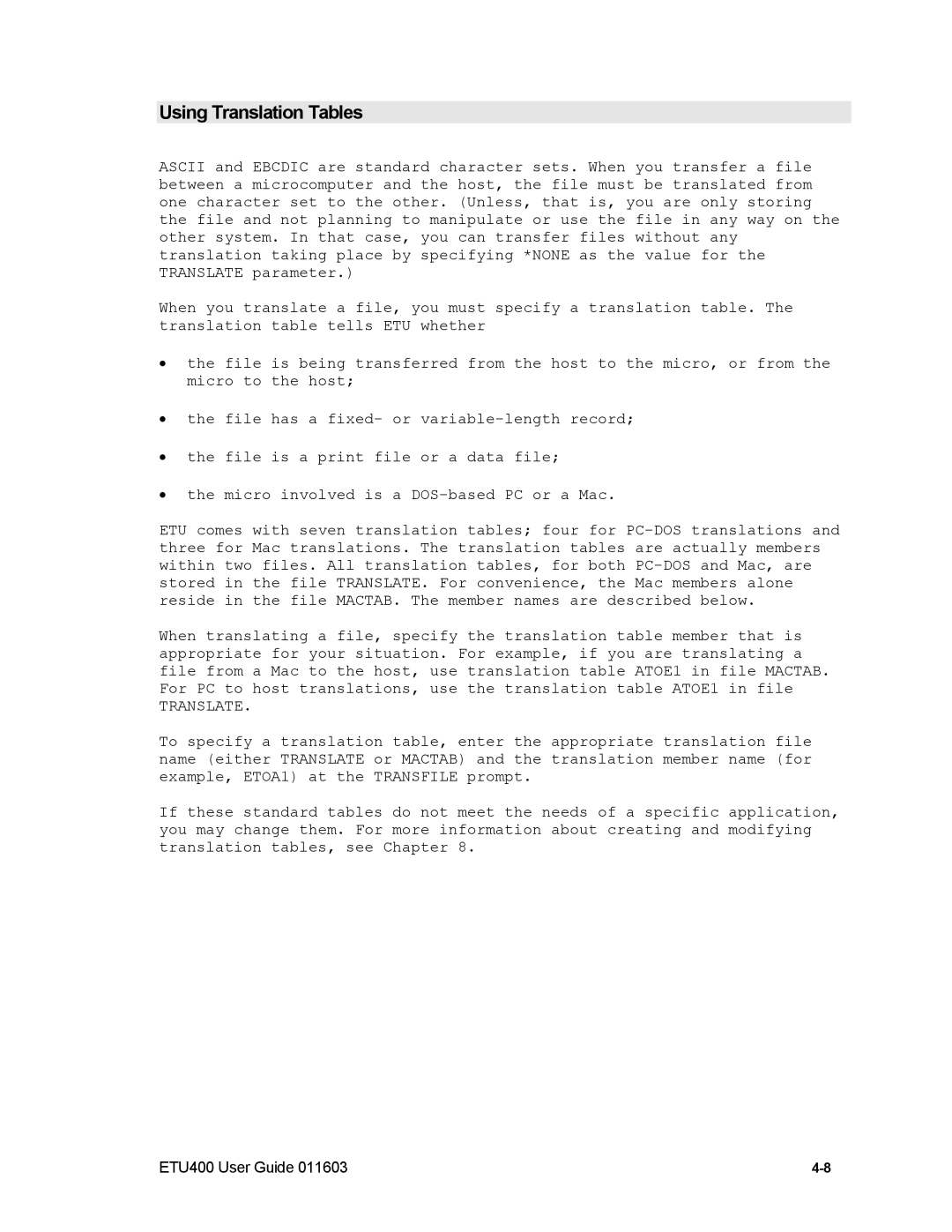Using Translation Tables
ASCII and EBCDIC are standard character sets. When you transfer a file between a microcomputer and the host, the file must be translated from one character set to the other. (Unless, that is, you are only storing the file and not planning to manipulate or use the file in any way on the other system. In that case, you can transfer files without any translation taking place by specifying *NONE as the value for the TRANSLATE parameter.)
When you translate a file, you must specify a translation table. The translation table tells ETU whether
•the file is being transferred from the host to the micro, or from the micro to the host;
•the file has a fixed- or
•the file is a print file or a data file;
•the micro involved is a
ETU comes with seven translation tables; four for
When translating a file, specify the translation table member that is appropriate for your situation. For example, if you are translating a file from a Mac to the host, use translation table ATOE1 in file MACTAB. For PC to host translations, use the translation table ATOE1 in file
TRANSLATE.
To specify a translation table, enter the appropriate translation file name (either TRANSLATE or MACTAB) and the translation member name (for example, ETOA1) at the TRANSFILE prompt.
If these standard tables do not meet the needs of a specific application, you may change them. For more information about creating and modifying translation tables, see Chapter 8.
ETU400 User Guide 011603 |
